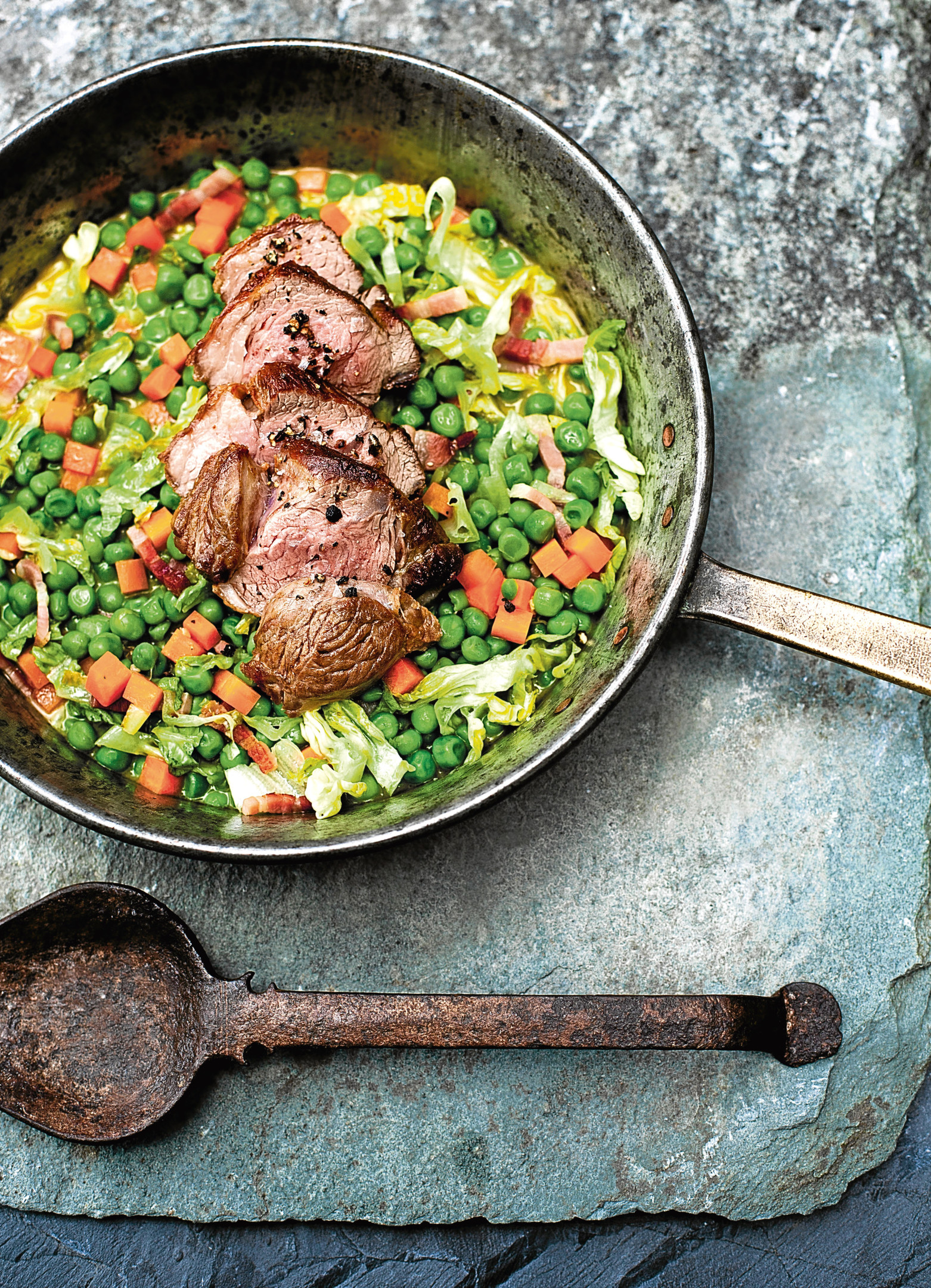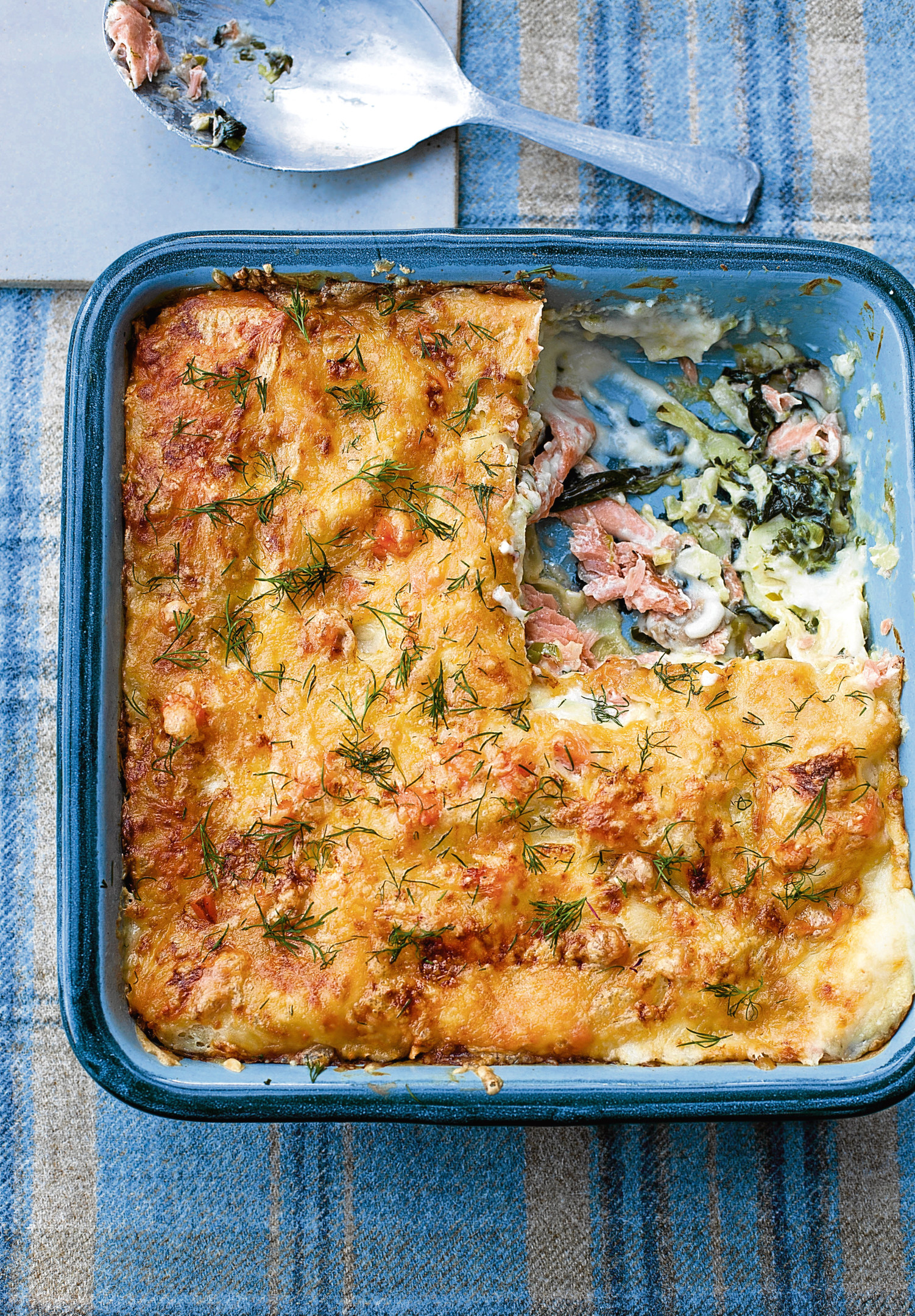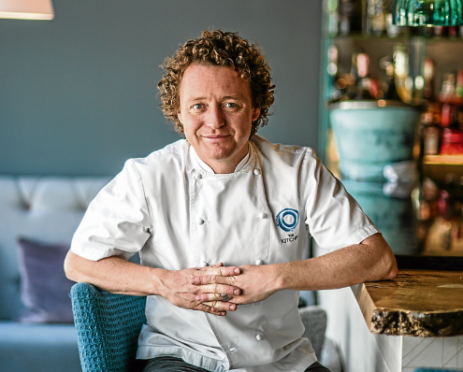This time of year can make chefs a little impatient. We’re so close to spring that we can almost taste it, yet a chill – and sometimes snow lingers in the air, reminding us that winter is only just ending.
One thing that can help is the abundance of greens pushing through the soil, full of nutrients and minerals – from brassicas like cabbage, to leafy greens like spinach and chard. These vegetables are the perfect bridge between the earthy root vegetables that saw us through the long winter, and the advent of salad season.
Watercress is now coming into season in the UK, and there are so many uses for it – so it’s always sad to see it only used as a garnish.
When it comes to cooking watercress, I quickly blanch it in salted water, then immediately place into a bowl of iced water to halt the cooking process, and ensure that the plant retains its vibrant green hue.
Spinach is packed with vitamins, and we go through seemingly endless handfuls both at the restaurant and at home. Spinach is available year-round, but the freshest, most tender leaves are far easier to come by in the spring. My wife Michaela’s smoked salmon and spinach lasagne has become a firm favourite with our four young boys.
The Scandinavian flavours make this cleaner and lighter than a classic Italian lasagne, a good match for the lengthening evenings.
British lettuces come into season later this month, and I’m looking forward to making one of my favourite recipes – an adaptation of petits pois à la Française.
I find that lamb rump has more flavour than other cuts, as well as being more tender. This one-pan dish really takes advantage of that: using the rich juices from the rump to infuse the lettuce with all the lovely flavours of the dish.
Rump of Lamb with a Ragout of Peas, Carrots and Lettuce

To me, rump has more flavour than other prime cuts of lamb and this way of cooking it really maximises the taste. The vegetable ragout is my tweak on petits pois à la française. Cooking the vegetables in the pan used for the lamb and lardons infuses them with the lovely, intense flavours to delicious effect.
- 4 rumps of lamb, about 180–200g each
- Sea salt and freshly ground black pepper
- Olive oil for cooking
- 100g bacon lardons or pancetta, cut into strips
- 2 carrots, peeled and finely diced
- 500g freshly podded peas
- 150–200ml chicken stock
- 1 baby gem lettuce, thinly sliced
- 25g unsalted butter, in pieces
- Heat the oven to 180°C/Gas 4.
- Season the lamb rumps on both sides with salt and pepper and set aside to rest for 10 minutes.
- Heat an ovenproof frying pan over a medium-high heat and add a little olive oil. When hot, add the rumps of lamb and turn to colour well all over. Transfer the pan to the oven and cook for a further 5–6 minutes for medium-rare lamb.
- Once cooked, transfer the lamb to a warm plate and set aside in a warm place to rest.
- Return the pan to the heat, add a little more olive oil, then the lardons. Cook for 1–2 minutes until the lardons start to colour (and release their salty flavour). Add the carrots and cook for a further 2–3 minutes. Then add the peas, stir and season.
- Pour on enough chicken stock to just cover and cook over a high heat for 3–4 minutes, adding more stock as needed. Once the peas are cooked, stir through the lettuce and butter.
- Slice the rumps of lamb and serve them on the bed of vegetables and lardons.
Smoked Salmon and Spinach Lasagne

This comforting pasta bake is easy to prepare and always popular. The recipe is based on a Scandinavian dish that my wife Michaela has been making for years. It’s absolutely delicious and has the added advantage that it can be prepared in advance, ready to bake and serve when required.
For the béchamel sauce:
- 75g butter
- 75g plain flour
- 850ml milk
- Sea salt and freshly ground black pepper
For the lasagne:
- 25g butter
- 1 leek, trimmed, washed and cut into strips
- 400g baby spinach
- 2 garlic cloves, peeled and crushed
- 400g smoked salmon
- 300g Cheddar, grated
- 8–10 lasagne sheets
- 4 dill sprigs, roughly chopped, to garnish
- Heat the oven to 180°C/Gas 4.
- To make the béchamel sauce, melt the butter in a heavy-based saucepan, stir in the flour and cook for 1–2 minutes. Slowly stir in the milk and cook at a gentle simmer, stirring frequently, until the sauce thickens. Season with salt and pepper to taste. Set aside.
- For the lasagne, melt half the butter in a heavy-based pan over a medium-low heat. Add the leek strips, season with salt and pepper and sweat gently for 2–3 minutes.
- Add the spinach leaves, a handful at a time, along with the garlic and cook for another minute or two. Drain off the excess liquid.
- Use the rest of the butter to grease a large square or rectangular ovenproof dish.
- Cut the smoked salmon into small pieces, roughly 2cm square.
- Spoon a layer of the béchamel sauce over the bottom of the dish and layer a third of the lasagne sheets on top. Spoon half of the leek and spinach mixture over the lasagne, followed by a good third of the smoked salmon, then cover with a third of the remaining béchamel and sprinkle some cheese over the surface.
- Repeat the layers of lasagne, leek and spinach, smoked salmon, béchamel and cheese, then cover with a top layer of lasagne. Spoon the rest of the béchamel sauce on top and scatter over the remaining smoked salmon and grated cheese.
- Bake for about 45 minutes until the top is a deep golden colour. To check the lasagne is cooked, insert a knife in the middle; it should meet with minimal resistance.
- Scatter the chopped dill on top of the lasagne and serve, with a crisp green salad on the side.
Kitchin Suppers by Tom Kitchin (Quadrille, £12.99)
